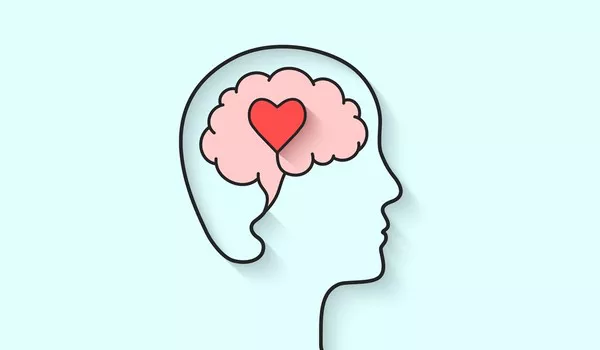Checking into a mental hospital, also known as a psychiatric or behavioral health facility, can be a daunting and unfamiliar experience for many individuals. However, it is a vital step for those struggling with severe mental health issues that require intensive treatment and support. In this article, we will provide a comprehensive guide on what to expect when you check into a mental hospital, debunking misconceptions, and shedding light on the compassionate care provided in these facilities.
1. Admission Process
The process of checking into a mental hospital typically begins with an initial assessment, either through a referral from a mental health professional or the emergency room. This assessment helps determine the severity of the individual’s condition and whether inpatient care is necessary.
Upon arrival, patients will be asked to provide personal information and medical history, including any medications they are currently taking. This information is crucial for the healthcare team to create a personalized treatment plan.
2. Evaluation by Mental Health Professionals
After the initial paperwork, patients undergo a comprehensive evaluation by a team of mental health professionals, including psychiatrists, psychologists, social workers, and psychiatric nurses. The purpose of this evaluation is to assess the patient’s mental state, any potential risks to themselves or others, and to establish a diagnosis or refine existing ones.
3. Safety and Stabilization
Inpatient mental health units prioritize safety and stabilization. Patients are often screened for items that could pose a risk to themselves or others and are provided with a hospital gown or clothing without drawstrings or other potentially harmful accessories.
Additionally, individuals may be placed on a close watch, which involves frequent monitoring by staff, especially if they have expressed thoughts of self-harm or suicide. The primary goal at this stage is to ensure that patients are safe and receive immediate care for any urgent needs.
4. Treatment Planning
Once the initial evaluation is complete and the patient’s safety is assured, the treatment team collaborates to develop an individualized care plan. This plan outlines specific therapeutic interventions, medications, group therapies, and other treatments tailored to the patient’s needs and diagnosis.
5. Medication Management
Many patients in mental hospitals are prescribed medications to help manage their conditions. Medication regimens are closely monitored by medical professionals, and adjustments are made as necessary. It’s essential for patients to communicate openly about their experiences with medications and any side effects they may encounter to ensure optimal treatment.
6. Group and Individual Therapy
Inpatient care includes both group and individual therapy sessions. Group therapy provides a supportive environment where patients can share their experiences, learn from others, and practice essential social and coping skills. Individual therapy allows patients to work one-on-one with a therapist to address specific issues and concerns.
7. Daily Routine and Activities
Mental hospitals often have a structured daily routine that includes meals, therapy sessions, recreational activities, and medication management. These routines help patients establish a sense of stability and predictability during their stay, contributing to their overall well-being.
8. Supportive Environment
Mental hospitals aim to create a safe and supportive environment. Staff members are trained to offer emotional support, understanding, and encouragement to patients throughout their stay. Patients are encouraged to build connections with peers facing similar challenges, fostering a sense of community and understanding.
9. Family and Friends Involvement
Family and friends can play an essential role in the healing process. Many mental hospitals provide opportunities for family involvement, such as family therapy sessions, educational resources, and visiting hours. Engaging with a patient’s support system can help improve outcomes and facilitate a smoother transition back to the community.
10. Length of Stay
The length of an individual’s stay in a mental hospital varies depending on their condition and treatment progress. Some may only stay for a few days, while others may require several weeks or even months of inpatient care. Discharge planning typically begins early in the treatment process, with the goal of ensuring a successful transition to outpatient care or other community-based resources.
11. Preparing for Discharge
Discharge planning is a collaborative effort between the patient, their treatment team, and, if appropriate, family members. The goal is to establish a plan for continuing care, whether through outpatient therapy, support groups, or medication management. Patients are provided with resources and strategies to maintain their mental health upon returning to their everyday lives.
12. Misconceptions about Mental Hospitals
Mental hospitals have historically been stigmatized and portrayed inaccurately in popular culture. It’s crucial to dispel common misconceptions to foster understanding and empathy for individuals seeking inpatient care for their mental health:
a. Sterile and Isolating Environments: Contrary to popular belief, mental hospitals are designed to provide compassionate care in a safe and supportive environment. Staff members are trained to create a healing atmosphere.
b. Straitjackets and Restraints: Restraints and straitjackets are used only as a last resort for safety, and regulations and protocols govern their use. They are not routine tools in modern psychiatric care.
c. Lack of Privacy: Mental hospitals prioritize patient privacy and dignity. Rooms are typically designed to accommodate individual needs, and therapy sessions are conducted confidentially.
d. Incarceration: Mental hospitals are not prisons; they are healthcare facilities designed to provide treatment, support, and therapeutic interventions for individuals struggling with mental health issues.
Conclusion
Checking into a mental hospital can be a challenging decision, but it is often a vital step toward recovery for individuals facing severe mental health issues. These facilities provide a safe and supportive environment where patients receive personalized treatment, support, and therapeutic interventions. Dispelling misconceptions about mental hospitals is essential to promoting understanding and empathy, ultimately contributing to better mental healthcare outcomes.


